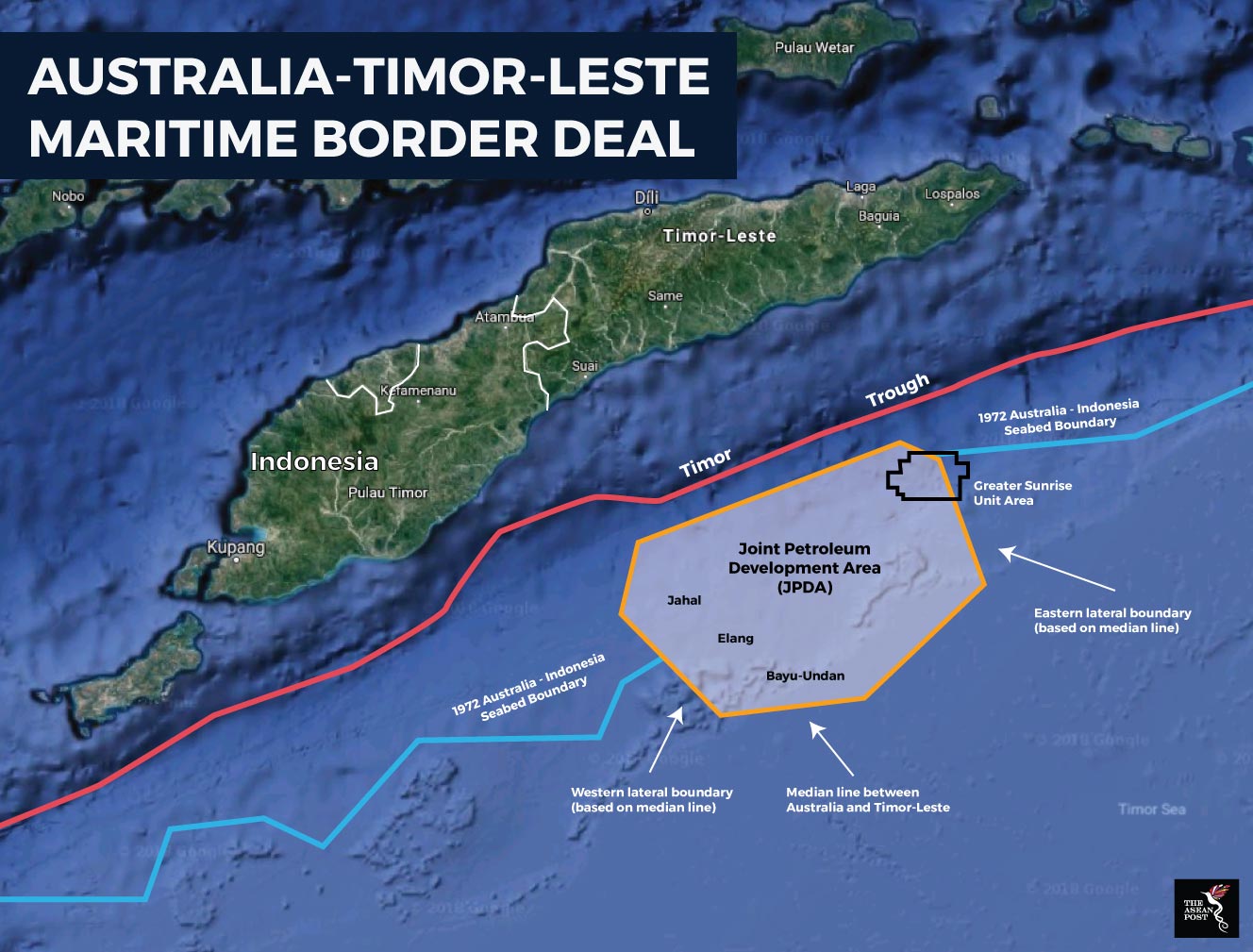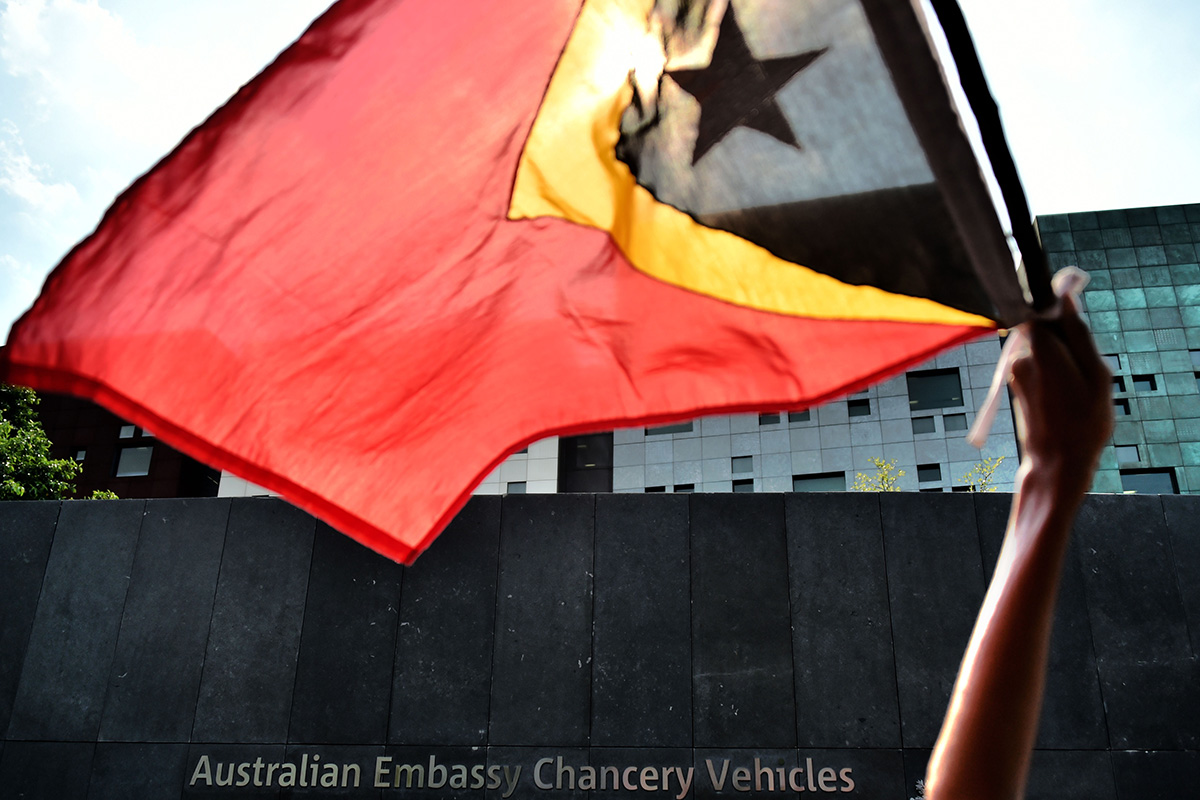Timor-Leste and Australia have finally reached an agreement over the maritime border between the two countries. The two countries signed a historic treaty on a permanent border in the Timor Sea at the UN headquarters on Wednesday.
The agreement comes after a 15-year dispute between Timor-Leste and Australia. The treaty doesn’t only determine the maritime border between both countries but would also determine each nation’s ownership and share of the rich oil and gas reserves in the Timor Sea which includes the coveted and untapped Greater Sunrise oil field. The Guardian reported this week that the Greater Sunrise oil reserves are estimated to be worth around US$53 billion.
The conflict between Timor-Leste and Australia first arose after Timor-Leste gained independence from Australia in 2002. Since Timor-Leste is a new nation, Australia and Timor-Leste have never established a permanent maritime border. Previously, the two neighbours agreed to a temporary border. The boundaries established in 2006 under the Treaty on Certain Maritime Arrangements in the Timor Sea ensured that revenues from the Greater Sunrise oil fields would be divided 50-50.
However, Timor-Leste believes that Australia is getting more than their fair share under the United Nations Convention on the Law of the Sea (UNCLOS) and demanded that a maritime boundary that is equidistant between the two countries be established. The international court of arbitration in The Hague took up the case in 2017.

Source: Australian Department of Foreign Affairs and Trade
The new treaty between Australia and Timor-Leste reinforces Timor-Leste’s previous claims. Under the agreement, the set boundaries will be equidistant between the two countries. These boundaries also determine that Timor-Leste will receive 80% of the revenue from the Greater Sunrise oil reserves.
The agreement comes with its fair share of controversies too. In 2012, a former senior intelligence officer known only as Witness K who worked with the Australian Secret Intelligence Service (ASIS) revealed that Australia had bugged the cabinet offices of Timor-Leste in order to gather information and gain an unfair advantage over Timor-Leste during negotiations for the Greater Sunrise oil fields in 2002.
Aside from that, Australian media ABC reported this week that Timor-Leste’s chief negotiator Xanana Gusmao had accused Australia for colluding with certain oil companies. According to Gusmao, Australia is planning to build a pipeline from the Greater Sunrise oilfields to Darwin, Australia. Gusmao claims that if this materialises, there will be an extra US$25 billion benefit for Australia rather than Timor-Leste. However, Timor-Leste is insisting that the pipeline be directed to them instead. Timor-Leste has proposed to cut their share of the revenue from the Greater Sunrise oil fields by 10% in return for a pipeline to Timor-Leste.
For Timor-Leste, the treaty is a long time coming. The treaty with Australia will be a much-needed boost for their economy.
Timor-Leste is a small country with a population of 1.4 million people who are mostly poor. According to the World Bank, 20% of the population is unemployed and half the population is illiterate. In 2005, the country established a sovereign wealth fund called the Timor-Leste Petroleum Fund where the surplus wealth from its oil and gas sector is deposited. The funds are often used to pay for much needed public infrastructure projects.
Previously, most of the petroleum fund was funded by revenue from the Bayu-Undan oil field which is expected to stop producing in 2022. So, this agreement with Australia couldn’t come at a better time. Former president and Prime Minister of Timor-Leste, José Ramos Horta told The Guardian on Tuesday that the treaty was “….an absolute necessity for the future wellbeing of this country.”
While the boundaries between the two countries and the share of revenue might have already been agreed upon, there hasn’t been any agreement yet on how the oil fields will be developed. Australia has done the commendable act of agreeing to the permanent boundaries, but their behavior surrounding this has been questionable. The two parties need to find a way to develop the oil field in a way that would be beneficial to both countries while still respecting the newly defined boundaries.
